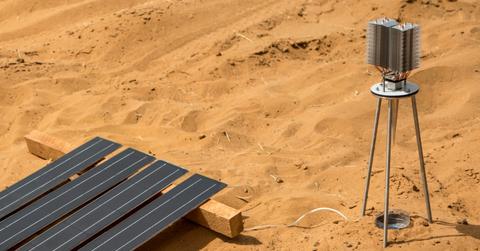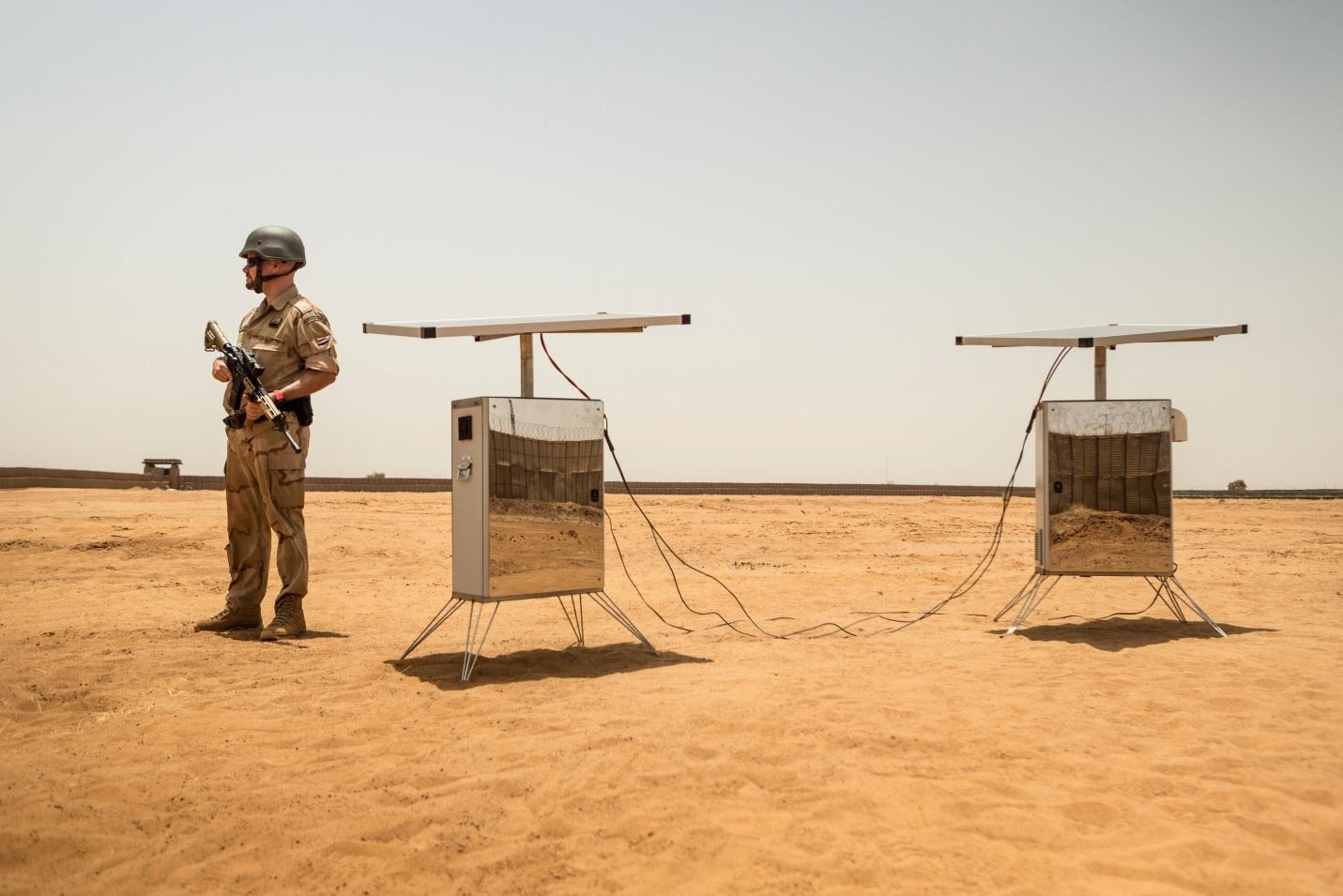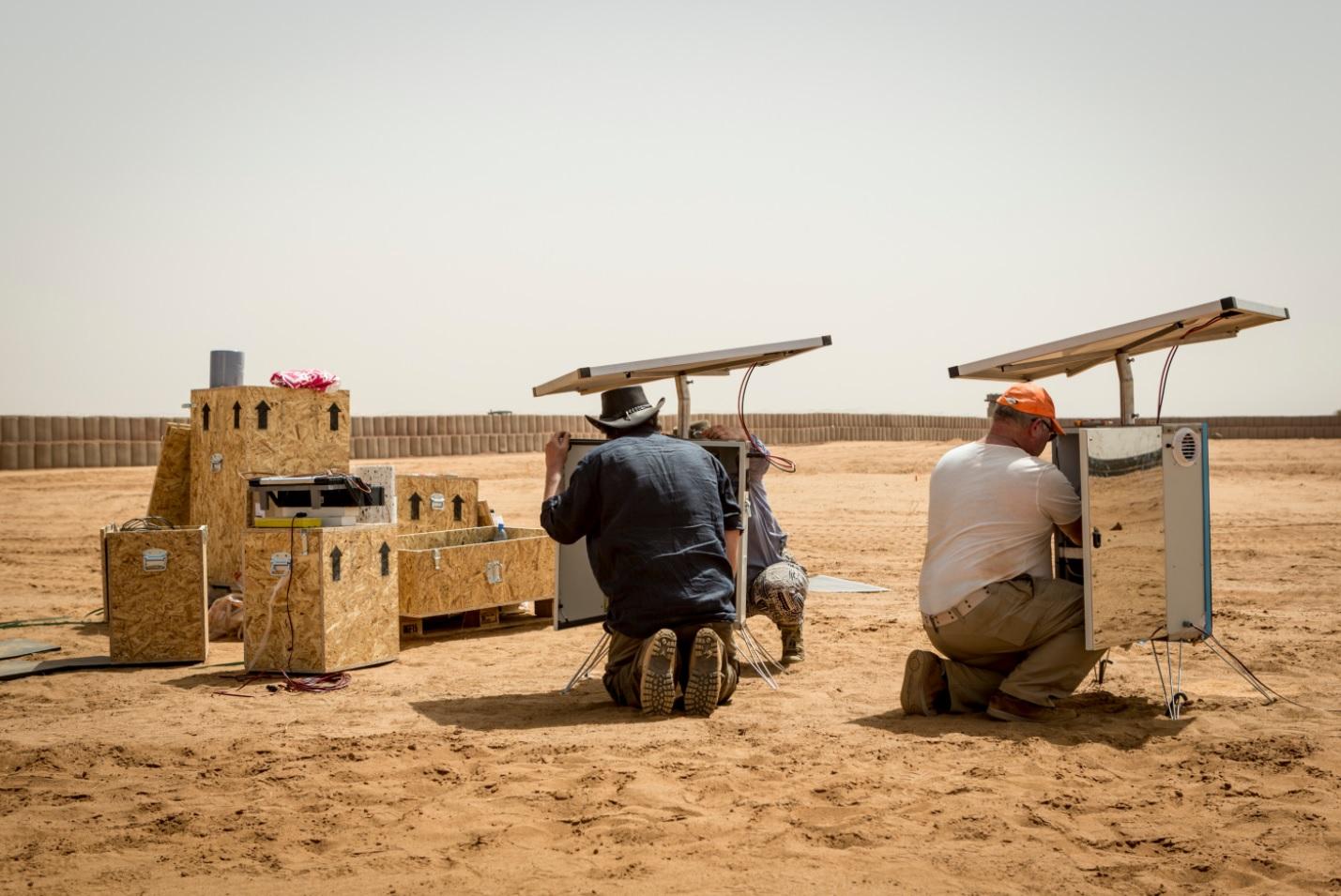Solar-Powered Well Achieves Water Harvesting In Deserts
One ambitious Dutch company has been able to harvest water in the hottest of desert climates. They achieved this by creating a solar-powered system that cools down metal plates to 50 degrees lower than the actual temperature, creating condensation.
Updated May 23 2019, 4:33 p.m. ET
In places like the Sahara Desert, rainfall comes at a premium every year. That doesn’t mean water is not existent in the atmosphere. One Dutch company has been able to figure out how to extract the humidity in the air when it cools off and created a harvesting water well, creating a useable resource in a surprising area.
SunGlacier has created the Desert Twins, a solar-powered water making prototype. It consists of an energy unit that is controlled by solar panels and a collection of metal plates that cool down enough to attract moisture in the air. This water would trickle down the plates and be collected in a well.
Ap Verheggen, a founder of SunGlacier, explained how the machine can pick up water in dry climates in an article on Dezeen. “It's mostly because of the high temperatures that it doesn't rain. The relative humidity is low, but the absolute humidity can be very high."
What’s the difference? Absolute humidity measures water vapor in the air no matter the temperature while the other is the measurement that’s relative to the current temperature. Relative humidity is what’s given in weather forecasts, but if absolute humidity was equal, warm air from the desert can hold a lot of moisture.
Verheggen also went on about the benefits of a unit like this: “The world population is exploding, which causes a huge stress on water. Harvesting atmospheric water is in my view an excellent addition. Using solar water for human consumption or agriculture is like borrowing this water. It's a short cycle, when the water is given back to nature."
Practice runs with the prototype have been successful even in the worst climates, one of those being during a drought in the Sahara Desert. The team needed the metal plates to be 15 degrees cooler when initial testing was done in the Netherlands, but they had to achieve a 50-degree difference in the desert. The product runs on a 50-watt system and 12 volts, which is similar to a car headlight.
Early testing in the desert didn’t harvest any water. Documentation on SunGlacier’s website explained how hey tried moving the metal plates under the solar panel, adding insulation to the solar panel box, and putting the solar unit under protection. After tinkering with the cooling systems, they were able to achieve water accumulation, but another problem was they dry air in the Sahara evaporating it. After producing more of it the next day, they obtained a significant amount.
SunGlacier hopes to create a model that require less energy and eventually mass produce the Desert Twins. Water that’s formed from the unit is similar to rainwater, meaning that it can be used directly for agriculture or it can be purified for drinking and cooking. The company is also looking into features that can clean the water itself.


